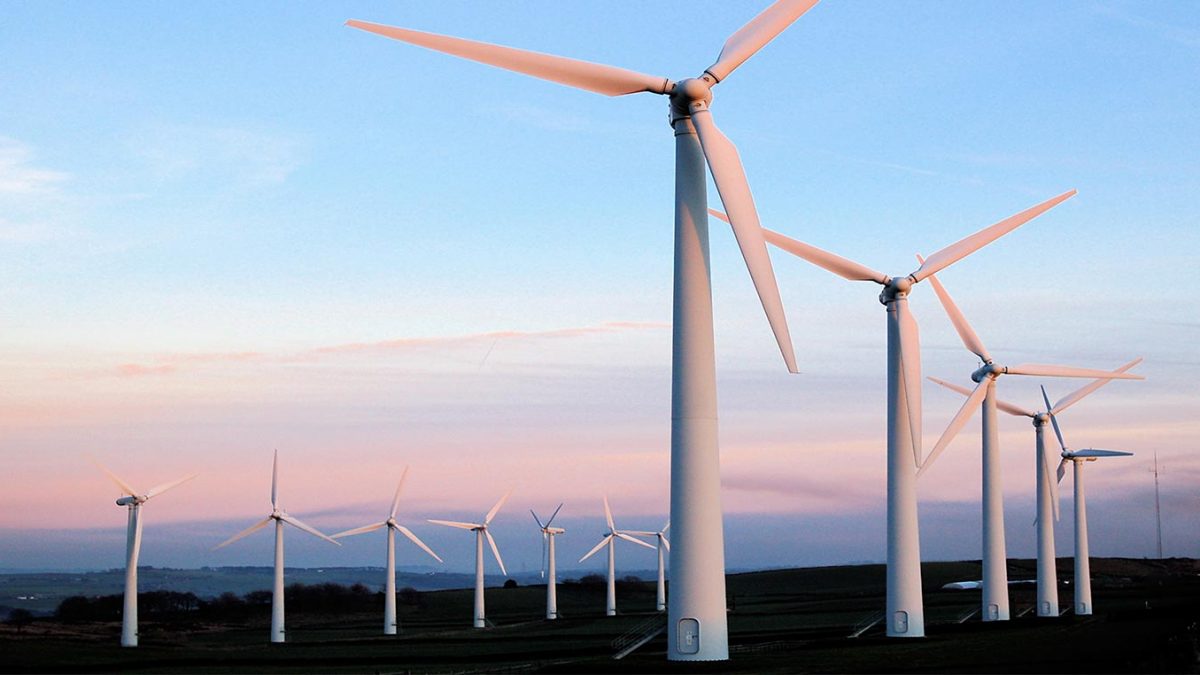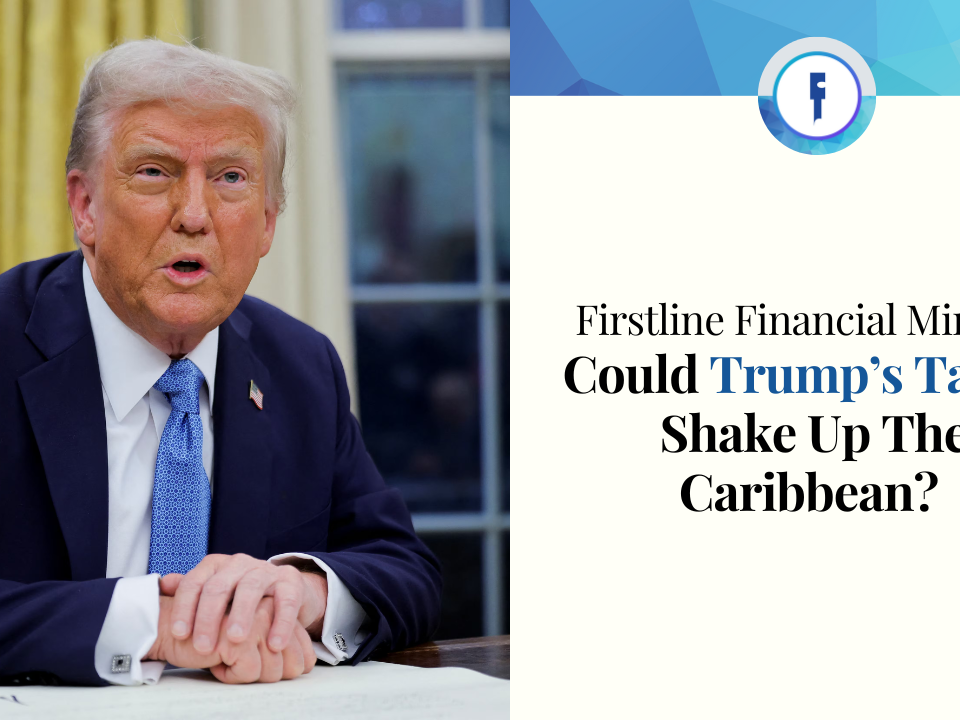INSIGHTS
FIRSTLINE’S REVIEW: THE MPC IPO


A Firstline Securities Limited Blog by: Jonathan Wilson
IF YOU WISH TO INVEST IN THIS IPO, PLEASE CONTACT A FIRSTLINE SECURITIES REPRESENTATIVE (SEE CONTACT INFORMATION BELOW) ON OR BEFORE
FRIDAY 21st DECEMBER, 2018.
Summary
MPC Caribbean Clean Energy Limited (CCEL) is offering shares via an Initial Public Offering (IPO) to investors in Trinidad & Tobago and Jamaica. CCEL, incorporated in Barbados, will invest in MPC Caribbean Clean Energy Fund LLC (CCEF), which was incorporated in the Cayman Islands; enabling eligible investors to indirectly invest in clean energy in the Caribbean Basin.
This blog provides our overview of the CCEL Prospectus (click here) for Trinidad & Tobago investors: the offer and business structures; the key risk drivers from our perspective; what we can say thus far regarding valuation; and general recommendations on investing in these shares.
Description
Offer & Company Summaries
| Offer Type | Initial Public Offering | Prospectus Date | 20-Nov-18 |
| Share Class | B | CCEL Incorporation Date | 8-Nov-17 |
| Shares Offered | 50,000,000 | CCEF Incorporation Date | 30-Oct-17 |
| Offer Price (USD) | 1.00 | CCEF Target Size (USD) | 200,000,000 |
| Target Gross Proceeds (USD) | 50,000,000 | MPC Committed Capital (USD) | 5,000,000 |
| Minimum for Listing (USD) | 10,000,000 | CCEF Investment Period (Years) | 10 + 2 w/ Advisor consent |
| Listing Date | Jan-19 | CCEF Leverage (Max) | 35% of Committed Capital |
| Offer Open Date | 3-Dec-18 | Sector (GICS) | Utilities |
| (Extended) Offer Closing Date | 21-Dec-18 | Sub-Industry (GICS) | Renewable Electricity |
| Stock Exchanges | Trinidad & Tobago Stock Exchange Limited (TTSE) | ||
| Jamaica Stock Exchange Limited (JSE) | |||
| Arranger & Lead Stockbroker | First Citizens Brokerage and Advisory Services Limited | ||
| JN Fund Managers Limited | |||
| Auditor | BDO Barbados | ||
| Banker | CIBC FirstCaribbean International Bank (Bahamas) Limited | ||
Corporate Structure
Consider the corporate structure (charts on prospectus pages 88 or 130). In short, German asset manager MPC Capital AG (MPCK) is the sponsor of CCEF. MPC Capital AG subsidiaries are offering advisory, management and equity in order to partner with potential CARICOM and non-CARICOM investors in CCEF. CCEL is one investor member among others in CCEF. CCEL has no investment discretion: it will be obligated to fulfil drawdown requests by CCEF.
The structure is for accommodating certain tax and regulatory considerations of CARICOM investors, among other things.
Company Sponsor
MPC Capital AG is an independent, publicly listed asset and investment manager for alternative investments. Together with its subsidiaries, MPCK focuses on real estate, shipping and Infrastructure. MPCK is a product provider and asset manager for global institutional investors, family offices and professional investors. It has been quoted on the stock exchange since 2000 and has around 270 employees group-wide. Its assets under management (AUM) is EUR 5.2 billion (Jun-18) and its market capitalisation is EUR 82.7 million.
Share Capital
CCEL’s authorised share capital comprises Class A and Class B shares. Select considerations are as follows:
| Select Characteristics | Class A (Management Share) | Class B (Participating and Voting Shares without Par Value) |
| Shares Authorised to Issue | Unlimited | Unlimited |
| Voting Rights | Can elect and remove Directors | Cannot elect and remove Directors; no control of management or business |
| Dividend and Distribution Rights | No dividends payable | Dividends payable |
| Rights upon dissolution or winding-up | Right to capital but not surplus | Right to both capital and surplus |
The purpose of the management share is to ensure that the structure of the investment, and by extension CCEF, is not subverted by shareholders who may acquire substantial interest in the CCEL.
For those curious about what exactly “participating and voting shares without par value” means, ‘participating’ denotes the dividend rights; ‘voting’ refers to the voting powers—but only in the absence of Class A shares; and ‘without par value’ means that there is no nominal value or that one’s entire capital investment is at risk. Lastly, the Class B shares on offer are ‘redeemable’ which speaks generally to the legal (or criminal) circumstances under which investors’ shares can be compulsorily withdrawn and their capital returned.
Investment Thesis
The Caribbean faces acute challenges associated with energy consumption and generation. Heavy dependence on imported fossil fuels exposes many Caribbean countries to volatile oil prices and produces high electricity tariffs—among the highest in the world—and limits economic development among many other challenges. The region requires significant investment in clean electricity generation to meet energy demand growth as well as its carbon emissions reduction targets, but lacks sufficient local capital to address this.
The energy mix in Jamaica, for example, relies up to 90% on fossil fuel. Electricity is very expensive, because oil and natural gas must be imported. Commodity-exporters such as Trinidad & Tobago and Suriname are low-cost exceptions, but the decline in commodity prices exposed weaknesses in fiscal policy and led to large deficits and rapid increases in public debt. Thus, government energy policies are currently shifting to support renewable energy (RE). CARICOM states are expected to add over 5.3 GW in RE capacity in the next 10 years requiring some USD 8.4 billion.
The power systems in most CARICOM states share several defining characteristics. The majority rely on a single utility supplier that has monopoly control over the transmission and distribution of on-grid electricity (or, in multi-island nations, separate utilities exclusive to one or more islands). In many cases energy regulators have been established to monitor these utilities either under government authority or operating as independent entities. In some member states, independent power producers (IPPs) are in operation, while in others they are prohibited by law or rely on agreement with vertically integrated utilities. Since most states are relatively small, with isolated grids and no existing connections to other states, they have small power systems that require high reserve margins to ensure reliability.
In other respects, member states face unique challenges. Although electricity access is generally high across the region, some states face low quality of service and significant unmet demand, as well as deteriorating equipment and high technical and non-technical losses. In several states, non-payment for electricity services makes electricity more expensive for those who pay and hinders the profitability and sustainability of utilities. Non-payment presents further challenges to utilities because it can discourage investment in new energy infrastructure, making expansion, repair, and development more difficult. Inappropriate tariff levels and a lack of effective regulations in some member states limit both innovation and efficiency.
However, this tariff structure can be very profitable and attractive for investors. So even as the Caribbean is a niche market, CCEL’s wider target region of the (Non-Caricom) Caribbean Basin is a significant opportunity and growth potential for RE investments.
CCEF Strategy Summary
| Markets | Caribbean (priority markets include Colombia, Jamaica, Dominican Republic and Trinidad & Tobago) |
| Technology | Generation: solar photovoltaic (PV) and wind |
| Energy efficiency & storage | |
| Size | 10 MW to 100 MW (except for distributed solar PV) |
| USD 5 million to USD 25 million of equity | |
| Stage | Primarily projects pre-construction (greenfield) and limited projects post-construction (brownfield) |
| Ownership | Majority or significant minority control |
| Revenue model | Long-term contractual revenue through appropriate power purchase agreements (PPAs) or lease model |
| USD-denominated revenues | |
| Leverage | 60% – 80% asset level project finance |
| Some projects will be financed by all equity | |
| Investment hold | 6 – 8 years |
Project development Investment Phases
CCEF will acquire investments mainly during the final stages of the development period (high to medium risk), subject to various conditions precedent. At these final stages, projects are significantly de-risked, with main contracts and permits in place. Thus, CCEF aims to operate in the Construction & Operation phase (medium to low risk) and briefly in the Asset Management (low risk) phase prior to its exit stage by sales to local or regional investors or industrial players.
CCEF’s rationales are the avoidance of development risk and returns from yield compression (which is taking advantage of projects’ (perceived) changing risk-return profile — achieving relatively more return for given capital invested).
Intended Portfolio Composition
The main allocation criteria are construction projects (70%) and operating assets (30%). Diversification rules—without Advisory Committee consent—include these limits: single investments (20%); single CARICOM country (25%); single non-CARICOM country (15%); and total non-CARICOM countries (35%). Projects’ investment period will be 4 years plus 6 months extension with Advisory Committee’s consent.
| Technology | Indicative Allocation by CCEF | Rationale | |
| Solar PV (utility scale/ distributed) | 40% – 60% (capped at 70%) | 80% – 100% | Utility scale: Strongest area of pipeline to date. The Caribbean is generally environmentally better suited for solar than wind resources. Potential to become low cost energy producer given the comparative maturity of technology, low construction risks and competitive levelised cost of energy (LCOE). Distributed: Opportunistic; allows CCEF to take advantage of developer pipelines. To be considered in portfolios only. |
| Onshore Wind | 40% – 60% (capped at 70%) | Most mature and adaptable renewable energy technology. However, limited potential for Caribbean islands due to wind resource, weather conditions and logistics. | |
| Energy Storage | 10% (capped at 20%) | 0% – 20% | Critical element for distributed solar PV; potential application for utility-scale renewable energy in the near-term; and rapid growth potential. |
| Energy Efficiency | Strong demand for energy savings in the region; and rapid growth potential. | ||
Seed Assets
Paradise Park is a 50 MWp fixed ground-mounted solar park in Westmoreland, Jamaica. This southwest side of the island is perfect for the plant in terms of irradiation and protection against hurricanes and other extreme weather conditions. Once completed, the solar park will be the largest PV power plant in the island nation; annual output of 82,000 MWh will provide power to 50,000 people. The plant will operate under a PPA with the Jamaican Public Service Company (JPS) for a period of 20 years.
Tilawind is an operational 21 MW wind park Tilawind, located in Tilarán in the Guanacaste province, Costa Rica. With a wind turbine capacity factor of 45%, Tilarán represents an excellent location for the wind farm, which has been operational since 2015 and has the potential to expand its capacity to 40 MW in the future. Tilawind and the expansion were developed and constructed by the local project developer Gruman Resources, who currently operates the wind farm.
Indicative Pipeline
| Country | Sector | Capacity (MW) | Total Capex | Operation Start | |
| (USD Millions) | (%) | ||||
| Jamaica | Solar PV | 50 | 64 | 10 | 19H1 |
| Costa Rica | Offshore Wind | 21 | 50 | 8 | 15H1 |
| El Salvaldor | Solar PV | 5 | 7 | 1 | 19H1 |
| El Salvaldor | Solar PV | 6 | 7 | 1 | 18H2 |
| Colombia | Off-Grid Solar | 3.5 | 5 | 1 | 19H1 |
| Jamaica | Energy Efficiency | 1 | 2 | 0 | 19H1 |
| Dominican Republic | Solar PV | 50 | 70 | 11 | 20H1 |
| Honduras | Solar PV | 55.3 | 110 | 18 | 19H2 |
| Dominican Republic | Off-Grid Solar | 2 | 3 | 0 | 19H2 |
| Trinidad & Tobago | Onshore Wind | 50 | 93 | 15 | 20H1 |
| Costa Rica | Energy Efficiency | – | 4 | 1 | 19H2 |
| Costa Rica | Onshore Wind | 21 | 50 | 8 | 19H2 |
| Curaçao | Solar PV | 15 | 24 | 4 | 20H1 |
| Trinidad & Tobago | Solar PV | 35 | 45 | 7 | 20H2 |
| Jamaica | Solar PV | 50 | 60 | 10 | 20H2 |
| Jamaica | Energy Efficiency | 20 | 20 | 3 | 20H2 |
| 385 | 613 | 100 | |||
| Country | Total Capex (%) |
| Jamaica | 24 |
| Trinidad & Tobago | 23 |
| Honduras | 18 |
| Costa Rica | 17 |
| Dominican Republic | 12 |
| Curaçao | 4 |
| El Salvaldor | 2 |
| Colombia | 1 |
| Sector | Total Capex (%) |
| Solar PV | 63 |
| Onshore Wind | 23 |
| Offshore Wind | 8 |
| Energy Efficiency | 4 |
| Off-Grid Solar | 1 |
Seed assets are highlighted. The indicative pipeline projects are accounting for 314 MW and would require a total investment around USD 499 million. These projects are intended to be pursued as priority opportunities for CCEF, although other opportunities will continue to be sought over the course of the investment period.
Use of Proceeds
CCEL will use the IPO proceeds to invest in CCEF, which will thereafter use these funds for investing in clean energy projects and facilities with a particular focus in the Caribbean Basin.
- CCEF has entered into a binding facility agreement with Republic Bank Limited to facilitate the acquisition of Tilawind. CCEF intends to repay the facility with IPO proceeds.
- CCEL will also use proceeds to pay the IPO expenses, no more than some USD 1 million (inclusive of VAT, General Consumption Tax, brokerage fees, legal fees, accountant’s fees, Registrar’s fees, filing fees, initial listing fees, and marketing expenses).
Dividend Policy
CCEL has not distributed any dividends since its incorporation. CCEL’s intention is to pay regular dividends in support of its objective of maximising shareholders’ returns. After providing for an appropriate liquidity reserve to cover administrative and business expenses, contingencies and to adhere to any legal restrictions, CCEL intends to pay out up to 100% of the residual earnings received, at least annually. Dividends’ timing and amount are at the discretion of the Board of Directors.
Key Risks
Be sure to read the Prospectus’ Risk Factors (page 45). We provide here an overview of select risks.
Macroeconomic & Regulatory Risks
- Emerging and frontier markets are characteristically vulnerable to exogenous shocks including commodity price shocks, financial contagion and natural disasters.
- Sovereigns in CCEF’s target region have high public sector debt. Fiscal sustainability in these countries typically affects the business cycle, borrowing conditions and other macroeconomic conditions.
- Many infrastructure investments are subject to substantial governmental regulation, and such regulation that could negatively impact upon CCEF operations. CCEF’s avoidance of development risk is indirect—severe development lags reduce its investment opportunities.
Company- and Project-Specific Risks
- Following from the corporate structure, Class B investors will be dependent on Key Executives of MPC subsidiaries. Their skills, knowledge and expertise in these strategies have limited operating history in the target region. There is no guarantee that their previous success is replicable.
- The investment strategy is subject to Power Purchase Agreement Risk. PPAs are for electricity offtake that will generate CCEF operational cash flows. The failure of a power purchaser to fulfil its obligations under any PPA, or the termination of any PPA, may have material adverse effects on projects. Following from the single-utility structure described before, the PPA risk means investors will indirectly be taking sovereign exposure, on average.
- CCEL faces diversification risk. CCEF will only participate in a limited number of investments and the unfavourable performance of a single investment may adversely affect CCEF’s aggregate return. CCEF will invest exclusively in clean energy projects in the target region and will therefore bear the risk of investing in only one particular sector. Consequently, there is no guarantee that there will be a sufficient number of attractive investments available to CCEF or that CCEF will be able to invest fully all of its capital during the Investment Period. Furthermore, if CCEF is unable to syndicate an investment within the anticipated timeframe, it risks exceeding its diversification limits in respect of such investment.
Liquidity Risk & Market Sentiment
Liquidity risk refers to the ease of trading shares. If listed, we expect CCEL to trade on the TTSE with an average bid-ask spread similar to that of other cross-listings (NCBFG, FCI, GKC, JMMBGL and SFC). We estimated a range of 2.5% – 4%. For example, bidders will find it difficult to purchase CCEL in the secondary market without paying about that spread higher than the market price. Conversely, one probably cannot sell the shares against without giving up at least that much of market value to a potential buyer.
Thus far in 2018, JSE new issues were some JMD equivalent $31.98 billion, of which USD 61 million was raised between JMMBGL preference shares (70%) and Syngus Credit Investments shares (30%). The latest USD issue in local markets was in for some USD 90 million of First Citizens Bank bonds in January 2018.
CCEF and regional conglomerate ANSA McAL Limited (AMCL) are acquiring Tilawind jointly, a total investment of about USD 50 million.
CCEL has the makings of a good “story stock”: MPCK is a large, foreign sponsor; it partnered with listed large-cap AMCL; and clean energy is attractive to ESG objectives or biases for regional development. Investors, however, may be overly risk averse with USD allocations.
Valuation Summary & Recommendations
CCEL Forecasted Financial Statements: 2019 – 2023
Ernst & Young Services Limited prepared the Prospectus’ forecasted financials (as at 5-Nov-18) based on assumptions by external advisors and the management of an MPC subsidiary. The CCEL forecasts said little about the underlying economics of CCEF and its projects, especially without history. This will necessarily be the case because of the corporate structure that CCEL invests in CCEF, which invests in the projects in turn. The Prospectus describes generally the assumptions and approach (page 99). As of writing we have requested the details and will scrutinise them if made available. Below is what we gathered from these and hence how we considered valuation.
First, base projections assume a fully subscribed IPO (USD 50 million) and achieving the USD 200 million CCEF target size within 12 months thereafter; so CCEL would receive approximately 24% of all distributions made to investor members by CCEF. Note that MPC subsidiaries’ fees are an estimated 1.75% per annum of total commitments (and carried interest thereafter). CCEF’s share of only the seed assets’ net EBITDA are projected to reach USD 5 million in 2019 and USD 6 million in 2020 and 2021.
Second, the forecasts are based in good faith on the indicative or tentative project pipeline. On the upside, the (non-seed) pipeline projects forecasted were among those that require low capital expenditure relative to the others—a prudent assumption. On the downside, more information is needed about the larger-capex, priority pipeline projects. What was useful was CCEF’s stated intent to make investments over a period of not more than 4 years targeting an annual capital deployment of USD 35-65 million.
Third, the assumed “Principal on shareholders’ loan” revenue item was sensible insofar as projecting dividends, but neither in an economic nor accounting sense. We do not expect this to be a material error for dividend projections.
Fourth, besides the pipeline and revenue, the forecasts’ other critical assumption was, “A 60% multiplier Factor was applied to revenue (net of withholding tax) for each project to adjust for the estimated equity value of USD 50[M], down from USD 83M, which was originally reflected in the Fund Model.” We can consider this USD 83 million value as a best case. Unweighted revenues, or a 100% multiplier factor, thus means either an approximate value of USD 1.66 per share at the 12%+ targeted net yield that has been reported (see the FAQ) or a yield, internal rate of return or discount rate ranging between 20% – 25% if investors outlay USD 1.00 per share.
Discount Rate
Investors may judge the value of future returns either directly by weighing the cash flows more sceptically (lower multipliers) or indirectly whereby a higher discount rate suggests more risk or scepticism. Either method is valid, but here is what we thought about the 12%+ yield:
The USD GORTT 10-year yield was some 5.7% (JAMANs around 4.9% and COSTARs above 4.6%). Yields on government bonds (in this case USD bonds) are a benchmark for the conceptual minimum that investors should accept on equity, the so-called risk-free rate. Relative to CCEF’s 12% – 14% yield, these yields suggest that about 8% compensates investors beyond the minimum for the idiosyncratic, T&T equity market, lack of control and all other risks discussed.
USD has reserve currency status and is more valuable in the present T&T forex environment.
The USD-denominated investment universe is vast; hence diversification is more easily achievable than in TTD-denominated markets. Single-security investing in this case therefore requires due scrutiny whether (USD- and total-portfolio) diversification benefits are added or forgone. Generally, benefits are forgone when allocating USD in this manner—appropriate returns should be required when doing so.
Recommendations
We recommend a Buy for CCEL. Based on all the above and pending possible additional data, we considered CCEL fairly valued at USD 1.00.
Portfolio suitability for allocating USD to CCEL should be judged mainly by asset class, time horizon and diversification benefits.
- Equity investments such as CCEL are generally appropriate for allocations seeking higher risk and return—and requiring longer horizons for achieving that return.
- We recommend a horizon of at least 10 years: allocate only how much that can reasonably deployed for long without needing to liquidate the investment. This is not necessarily a recommendation to hold for this horizon.
- As CCEL invests in real assets that will likely have the inflation hedging characteristic that is generally sought in equities, CCEL also offers a unique geographic and sector risk profile that investors cannot easily access elsewhere (Prospectus page 68). Investors should consider including CCEL among a diversified (USD) portfolio that lack of are without these risk-return characteristics. Otherwise, invest then diversify with residual USD or future, external USD portfolio contributions or income.
CONTACT ONE OF OUR REPRESENTATIVES (SEE BELOW) BY
FRIDAY 21st DECEMBER 2018 IF YOU WISH TO INVEST IN THIS IPO.



